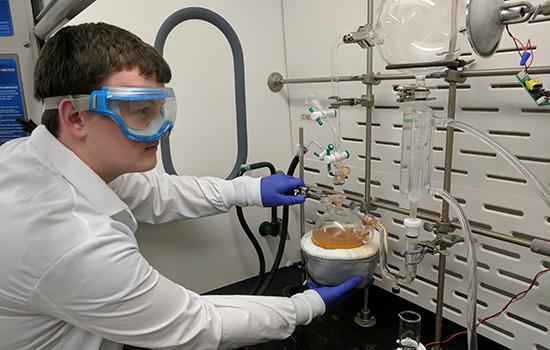Students study habitable zone of alien planets
RIT Science Exploration Program studies habitable zone of alien planets
Roger Dube
First-year students in the College of Science’s Science Exploration Program are simulating habitable condition on planets outside of our solar system. Jared Luce, from Coventry, Conn., studies alien oceans and atmospheres that might exist on distant planets.
First-year students in Rochester Institute of Technology’s Science Exploration Program are reproducing a slice of life in their lab that might exist on the seven Earth-like planets recently discovered in another solar system.
NASA announced the record-setting discovery of planets orbiting another star on Feb. 21. The red dwarf star, called TRAPPIST-1, is located 40 light years away. Astronomers studied fluctuations in the star’s brightness when the planets crossed in front of the star and blocked its light. Excitement surrounds the potential of liquid water on the seven planets and habitable conditions on the first three.
RIT undergraduates are simulating the right atmospheric conditions within the habitable zone suitable for supporting life beyond our solar system. The students’ experiments have created 10 amino acids—the fundamental building blocks of life—in different solutions. Their laboratory apparatus contains tiny oceans and atmospheres that could mimic conditions on an exoplanet. They are studying if amino acids can be produced in these harsh environments. Chains of amino acids can form proteins and, eventually, more complex organic material like RNA and DNA.
“The team has reproduced a wide range of conditions that might exist on distant planets and has been simulating the environmental and photochemical processes to determine whether or not amino acids are created,” said Roger Dube, director of the Science Exploration Program and professor in RIT’s Chester F. Carlson Center for Imaging Science.
The students have found a range of parameters that produce amino acids, which is the prerequisite for predicting what type of life might appear on exoplanets, Dube said.
RIT’s Science Exploration Program in the College of Science challenges first-year undeclared students with a single year-long project with an interdisciplinary scope. Students will present their findings at the 10th Imagine RIT: Innovation and Creativity Festival on May 6.












